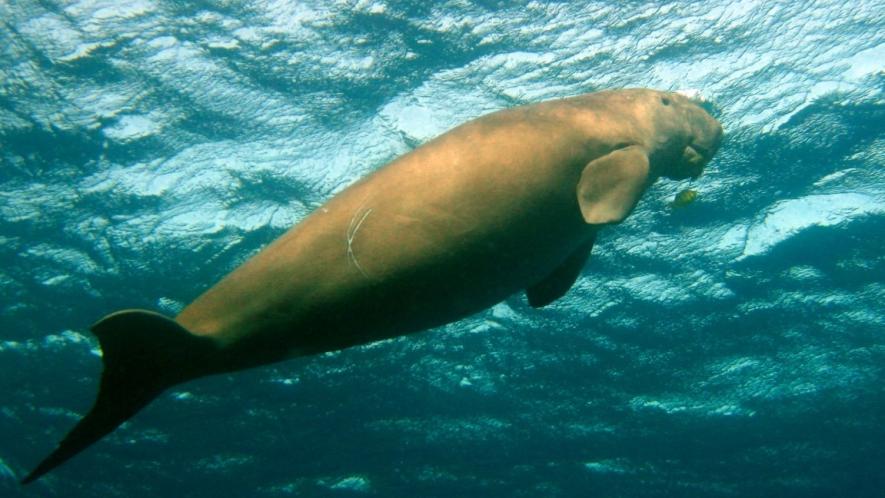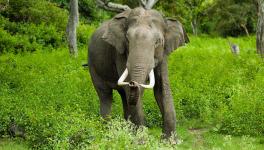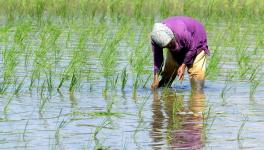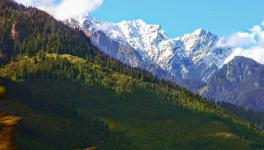Nearly extinct ‘Sea Cows’ Find Much-Needed Allies

It is also called the Sea Cow—the dugong is a herbivorous sea mammal that grows to about eight feet long and lives to about 70 years on average. The dugong is now in the ‘red list’ of the International Union for Conservation of Nature, at great risk of extinction. Marine scientists assumed that after 2012, it had been wiped out from the sea near Gujarat. However, a carcass was recently spotted by fishermen near Azad Island in the Gulf of Kutch, Jamnagar. Dugongs are now limited to the sea off the Andaman and Nicobar Islands, Gulf of Mannar, Palk Bay, Gulf of Kutch and Lakshadweep islands.
Wildlife Institute of India scientist K Shivakumar says, “The carcass of a dugong was found in Gujarat at Azad Island in 2012. After that, there was no sign of it there. So it was considered wiped out from Gujarat. Just days ago, however, fishermen reported having spotted a carcass. That has rekindled hope that dugongs still swim in these seas.”
WII, Dehradun, in collaboration with the forest departments of Gujarat, Tamil Nadu and Andaman and Nicobar Islands, and the Indian Coast Guard, the Indian Navy and NGOs, is now assessing the number of dugongs in the seas off India’s coast by conducting detailed population and habitat surveys. Local fishermen are a vital part of this exercise. Besides, aerial surveys, drones and satellites will also be used.
WII scientists estimate that no more than 250 dugongs now exist in the seas off India’s coast. After the recovery of the carcass from Azad Island, the sea in this area is being closely monitored.
Two years ago, the dugong was among four species—other than the Great Indian Bustard in the Thar desert, the dolphin in the Ganga and other rivers, and Manipur’s Sangai deer—that was listed as “threatened species” by the National Board for Wildlife, chaired by the prime minister. A committee had been constituted by the board to develop recovery plans for these species. The Ministry of Environment and Forests had earmarked Rs 100.38 crore for this recovery plan two years ago.
Fishing and pollution in the sea are major threats to the dugong. The range of their distribution has shrunk drastically, by an estimated 85% habitat loss.
The dugong is listed as protected under Schedule-1 of the Wildlife Protection Act, 1972, which provides for absolute protection and has the most stringent penalties. Despite all the legal protection, the numbers of dugong have been declining.
Fishermen near Park Bay in Tamil Nadu have also informed the WII of three carcasses found recently and in the past two years. “Fishermen who have been hunting for the dugong have been sensitised now by the WII staff and the state forest department. People going out to fish now report dugong sightings,” says Shivakumar. This is a huge achievement—one dugong could weigh up to 300 kg and its meat would fetch about two lakh rupees. “The fishermen, however, are also now more concerned about marine diversity and do not kill these rare creatures,” he adds.
WII has aided the local community by offering scholarships to put children of fishermen through school. Most of these children would drop out after class 9 or 11. “We now offer a scholarship of Rs 500 per month to 15 children in Tamil Nadu. There are 15 from Andaman receiving our scholarship, and 15 in Gujarat,” says Shivakumar. It will soon start another 150 scholarships. Nature camps, too, will be organised for children from these communities once every two months.
Fishermen, the scientist says, are also being encouraged to double as travel guides. It makes them proud of their environment and the creatures they live with and helps with turning them into conservationists.
WII now has permanent camps at Palk Bay in Tamil Nadu and at the Okha and Havelock islands, off the coast of Gujarat and the Andaman and Nicobar Islands, respectively.
Shivakumar says that foresters and WII scientists are yet to spot a dugong during their boat surveys, although local fishermen have reported sightings. Cooperation has now been sought also from the Indian Coast Guard, requesting them to monitor the sea closer to the shoreline more carefully. WII has trained over 200 officers of the Indian Forest Service from Tamil Nadu and Gujarat in monitoring marine biodiversity.
While poaching is the major threat to the dugong in Tamil Nadu, the oil refineries in the Gulf of Kutch pose a threat to these creatures in Gujarat. “The oil leakage and pollution by cargo of oil refineries has not only endangered the dugong but also eroded the grassy habitat on which the dugong feeds. In Andaman and Nicobar, tourist traffic and poaching by the small Onge tribe are the major challenges,” the WII scientist says.
Carcass studies are helping the scientists conduct genetic analysis and learn about the dugong’s food habitats. Genetically, there are two types of dugong—one ancient and the other more recently evolved in Australia. The more recently evolved variety accounts for about 90,000 of the world’s nearly one lakh dugongs. India has the ancient variety. “Genetic studies will help save the species from extinction,” Shivakumar says.
The author is a freelance journalist who writes on the environment.
Get the latest reports & analysis with people's perspective on Protests, movements & deep analytical videos, discussions of the current affairs in your Telegram app. Subscribe to NewsClick's Telegram channel & get Real-Time updates on stories, as they get published on our website.
























